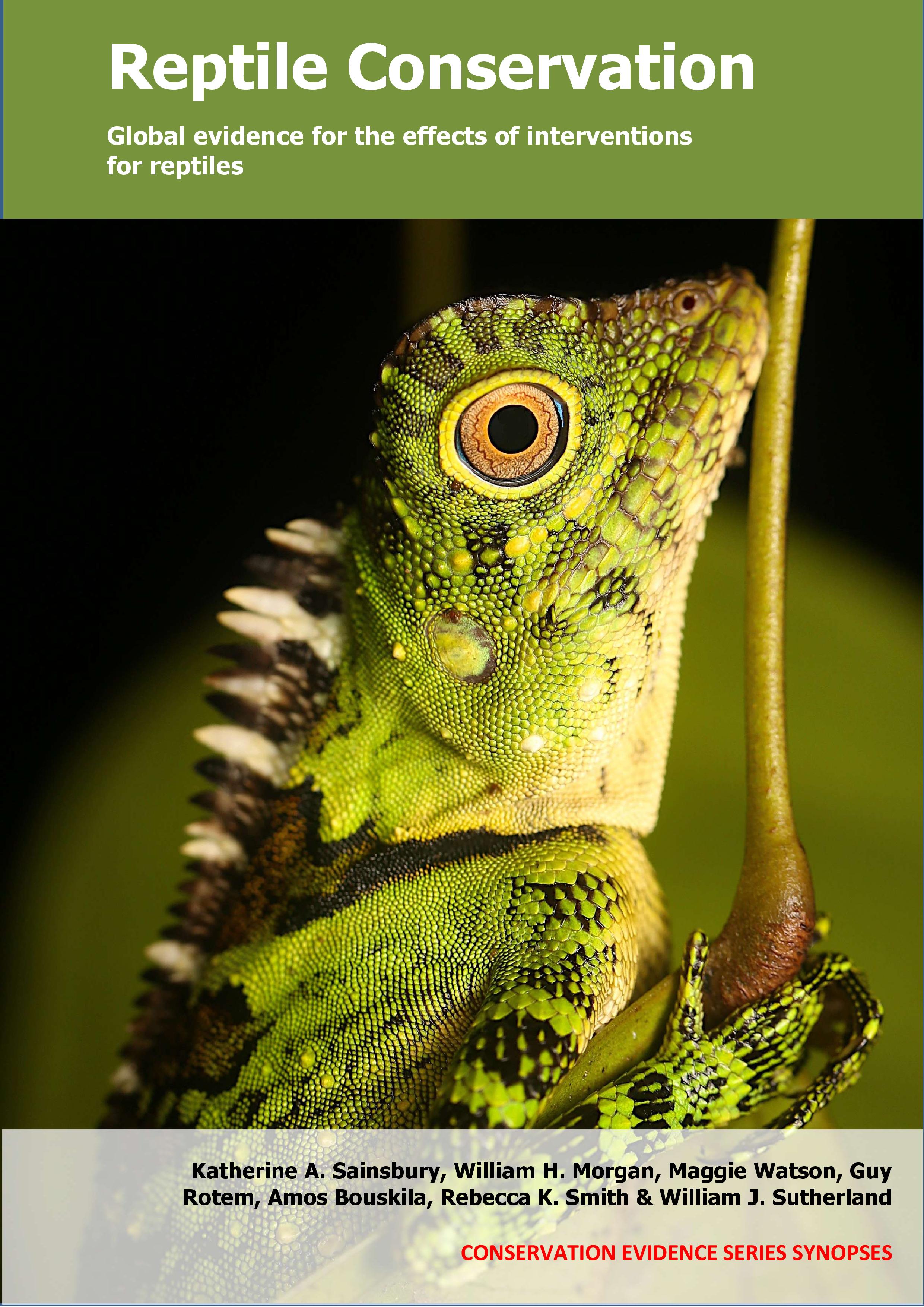Background information and definitions
Agricultural land often receives high chemical inputs to control pests, weeds and fungal infections, and to fertilize crops. These chemicals also enter water bodies through spray drift or run off. These chemicals may impact reptiles through reducing plant and insect diversity, direct toxicity, and endocrine disruption.
The toxic effects of many organochlorine pesticides are well-studied in reptiles (e.g. DDT, diazion). Turtle species may be most risk from pesticide use because of their long life-span leading to bioaccumulation effects (Wagner et al. 2015). Endocrine disruptors in the environment are usually associated with polychlorinated biphenyl (PCB) and dichlorodiphenyltrichloroethane (DDT) contamination, both of which have been banned in many parts of the world. There are strong associations between organochlorine contamination and feminisation in alligators Alligator mississippiensis (Guillette et al. 1994) and mortality in turtles (Eisenreich et al. 2009). Despite the bans, problems for wildlife have continued due to the persistence of the contaminants in the environment.
The direct impact of fertilizers on reptiles may very between species (e.g. Marco et al. 2004; De Solla & Martin 2007), but by altering plant communities in waterways and other surrounding habitats, they may have important indirect impacts on reptile populations.
Organic farming, an agricultural system that excludes the use of synthetic fertilizers and pesticides and relies on techniques such as crop rotation, compost and biological pest control, is included within this intervention.
De Solla S.R. & Martin P.A. (2007) Toxicity of nitrogenous fertilizers to eggs of snapping turtles (Chelydra serpentina) in field and laboratory exposures. Environmental Toxicology and Chemistry: An International Journal, 26, 1890–1895.
Eisenreich K.M., Kelly S.M. & Rowe C.L. (2009) Latent mortality of juvenile snapping turtles from the upper Hudson River, New York, exposed maternally and via the diet to polychlorinated biphenyls (PCBs). Environmental Science & Technology, 43, 6052–6057.
Guillette L.J., Gross T.S., Masson G.R., Matter J.M., Percival H.F. & Woodward A.R. (1994) Developmental abnormalities of the gonad and abnormal sex hormone concentrations in juvenile alligators from contaminated and control lakes in Florida. Environmental Health Perspectives, 102, 680–688.
Marco A., Hidalgo-Vila J. & Díaz-Paniagua C. (2004) Toxic effects of ammonium nitrate fertilizer on flexible-shelled lizard eggs. Bulletin of environmental contamination and toxicology, 73, 125–131.
Pauli B.D., Money S. & Sparling D.W. (2010) Ecotoxicology of pesticides in reptiles. Pages 203–24 in: D.W. Sparling, G. Linder, C.A. Bishop & S. Krest (eds.) Ecotoxicology of Amphibians and Reptiles, Second Edition. CRC Press, Florida.
Randall N.P. & James K.L. (2012) The effectiveness of integrated farm management, organic farming and agri-environment schemes for conserving biodiversity in temperate Europe—a systematic map. Environmental Evidence, 1, 4.
Wagner N., Mingo V., Schulte U. & Lötters S. (2015) Risk evaluation of pesticide use to protected European reptile species. Biological Conservation, 191, 667–673.






)_2023.JPG)














